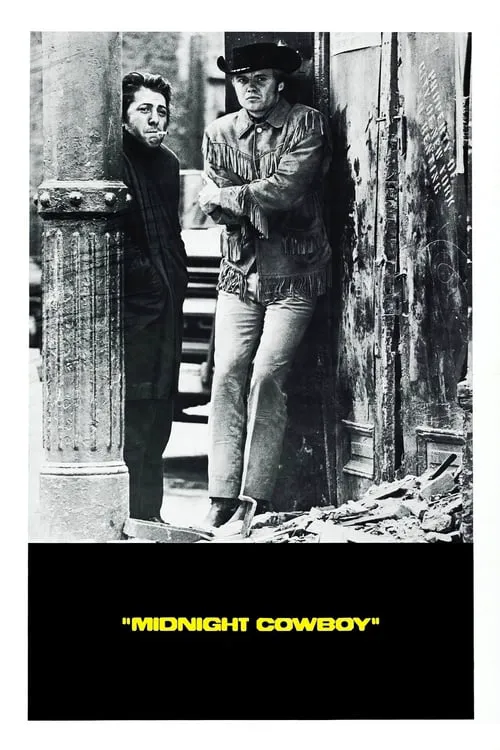Midnight Cowboy

Plot
Midnight Cowboy, directed by John Schlesinger, is a 1969 American drama film that tells the poignant and gritty story of two down-on-their-luck characters navigating the vibrant, yet harsh world of New York City in the late 1960s. The film's narrative masterfully weaves a poignant tale of friendship, vulnerability, and the American Dream, leaving audiences with a lasting impression of the film's themes and characters. The story begins with Joe Buck, played by Jon Voight, a young Texan who has arrived in New York City with the dream of becoming a gigolo, targeting wealthy women who can help him achieve financial success. Joe is charming, energetic, and optimistic, radiating an aura of American ingenuity and entrepreneurship. With his cowboy hat, boots, and a naive confidence, he embodies the quintessential American spirit of self-reliance and determination. However, Joe's plans quickly unravel as he struggles to find suitable clients, and his efforts to make money prove to be unsuccessful. Feeling disillusioned and lost in the city, he begins to question his decision to become a gigolo. It is during this time that Joe meets Enrico "Ratso" Rizzo, played by Dustin Hoffman, an older, ailing swindler with a crippled leg. Despite his own financial struggles, Joe takes pity on Ratso and agrees to take him under his wing, and an unlikely friendship blossoms between the two. Ratso, a seasoned con artist, has a unique perspective on life, which he often shares with Joe in vivid, poetic monologues. Ratso is a man worn by life, haunted by memories of his past, and consumed by a quixotic dream of escaping New York City to a warmer climate in Florida. Despite his rugged exterior, Ratso is a vulnerable, lonely soul, struggling to survive in a city that seems to have no place for him. As the unlikely duo spends more time together, Joe becomes increasingly aware of Ratso's desperation and vulnerability. He begins to see New York City through Ratso's eyes, witnessing the harsh realities of life on the margins. Through Ratso, Joe comes to understand that the American Dream, which he so desperately sought, is not solely about wealth and material success but about human connection, empathy, and a sense of belonging. The film's cinematography, captured by Geoffrey Unsworth, skillfully captures the essence of New York City's vibrant, yet seedy underbelly. The film's use of vivid colors, contrasting light and shadows, and the iconic aerial shots of the Manhattan skyline all contribute to the film's gritty, documentary-style aesthetic. Midnight Cowboy is a remarkable portrayal of the human spirit, one that celebrates the resilience, vulnerability, and complexity of its characters. The film's exploration of themes such as friendship, loneliness, and the elusiveness of the American Dream continues to resonate with audiences today. In the end, Joe Buck and Enrico "Ratso" Rizzo's story becomes a poignant reminder that the true essence of the American Dream lies not in grandeur or material success but in the quiet moments of connection, understanding, and shared humanity. Midnight Cowboy is a timeless classic that lingers in the viewer's mind long after the credits roll, inviting us to reflect on the fragility and resilience of the human spirit in the face of adversity.
Reviews
Recommendations




